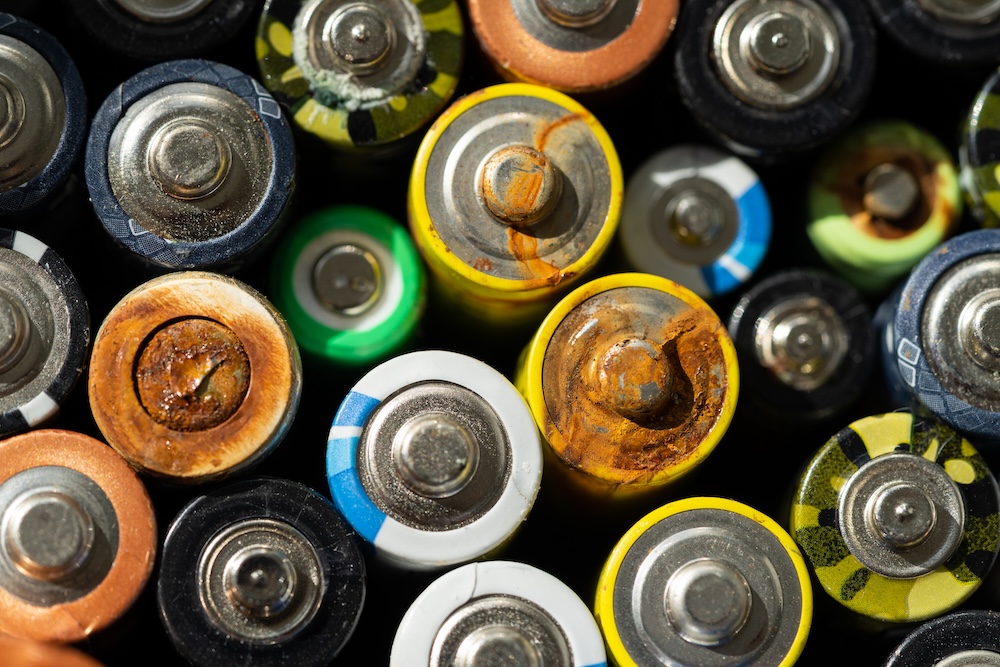Why Battery Impact Matters in a Clean Energy World
As clean energy adoption accelerates in 2025, batteries are essential for solar, wind, and electric transportation. But with their rise comes a question many overlook: What are the environmental costs of battery production, use, and disposal?
Understanding the full lifecycle of batteries—how they’re made, used, and recycled—is crucial for anyone interested in sustainable living or energy resilience.
What Are Batteries Made Of?
Modern batteries contain a mix of metals, chemicals, and materials that differ by type.
Common Battery Chemistries:
- Lithium-Ion: Lithium, cobalt, nickel, manganese, graphite
- Lead-Acid: Lead plates, sulfuric acid
- Nickel-Metal Hydride (NiMH): Nickel, rare earth elements
- Zinc-Based Batteries: Zinc, manganese dioxide (typically in AA/AAA)
Each material has unique environmental footprints, from mining to refining to waste.
Environmental Impacts of Battery Production
Mining for Materials
- Lithium: Water-intensive mining in fragile ecosystems like the Atacama Desert
- Cobalt: Linked to child labor and toxic waste in the Democratic Republic of Congo
- Nickel: Energy-intensive extraction often tied to deforestation
Manufacturing Energy Use
Battery production is energy-intensive, especially for EVs and grid-scale systems. Most emissions occur during manufacturing—not use.
Battery Use and Its Carbon Footprint
Operational Emissions
Once in use, batteries are emission-free—they store clean energy without direct pollution.
Lifecycle Emissions
- EVs powered by batteries emit far less CO₂ over time than gasoline vehicles
- Solar homes with battery backup reduce grid strain and fossil fuel dependence
Disposal and End-of-Life Concerns
What Happens to Dead Batteries?
- Many batteries end up in landfills, releasing toxic metals into soil and groundwater
- Only ~5% of lithium-ion batteries are currently recycled globally
Lead-Acid Batteries
Highly recyclable (~95%), but dangerous when improperly handled
Recycling Challenges
- Difficult to separate mixed chemistries
- Limited infrastructure for lithium-ion recycling
- Cost and regulatory barriers slow progress
The Future of Sustainable Battery Tech
Solid-State Batteries
- Higher energy density, less flammable, potentially safer materials
Cobalt-Free Chemistries
- Reduce reliance on unethical and high-impact materials
Battery-as-a-Service Models
- Companies retain ownership and responsibility for end-of-life recycling
Second-Life Battery Use
- Repurposing EV batteries for stationary energy storage
- Keeps materials in use longer and delays waste
What You Can Do as a Consumer
Choose Battery-Efficient Devices
- Look for ENERGY STAR or low-power modes
Use Rechargeables When Possible
- Reduces single-use waste
Recycle Responsibly
- Drop off old batteries at certified recycling locations
- Never throw lithium or lead-acid batteries in the trash
Support Brands That Recycle
- Apple, Tesla, Redwood Materials, and others invest in closed-loop systems
Common Questions About Battery Impact
Are batteries bad for the environment?
They have an impact, especially during production and disposal—but they’re far cleaner than fossil fuel alternatives when managed responsibly.
Can lithium-ion batteries be recycled?
Yes, but recycling rates are still low. New tech and policies are improving access and efficiency.
What’s the most eco-friendly battery?
Currently, lithium iron phosphate (LFP) batteries are safer, less toxic, and more recyclable than other lithium-ion chemistries.
What about alkaline (AA/AAA) batteries?
Use rechargeable versions when possible. Alkaline batteries can be recycled in some programs but often go to landfill.
How can I reduce my battery footprint?
Extend device life, recycle properly, avoid unnecessary gadgets, and support cleaner chemistries.
Final Thoughts: Smart Storage, Cleaner Future
Batteries are essential for the renewable revolution—but they aren’t impact-free. Knowing where your power comes from and how it’s stored helps you make smarter, more sustainable decisions.
With better materials, recycling systems, and consumer awareness, we can reduce the environmental toll of battery technology—and move closer to a truly circular, clean energy future.









Reader Interactions